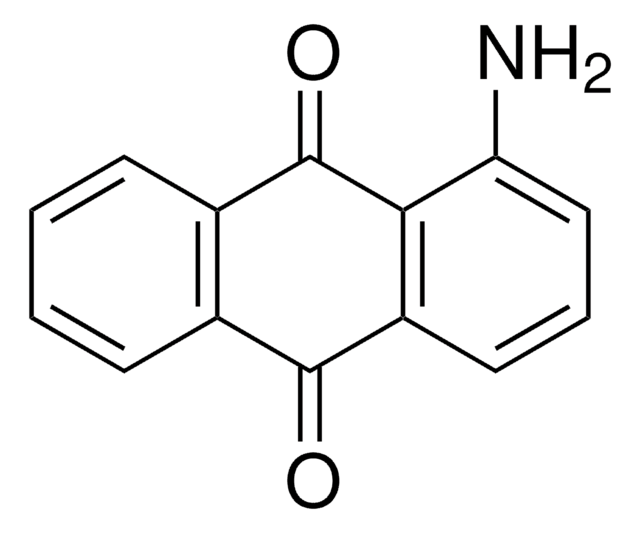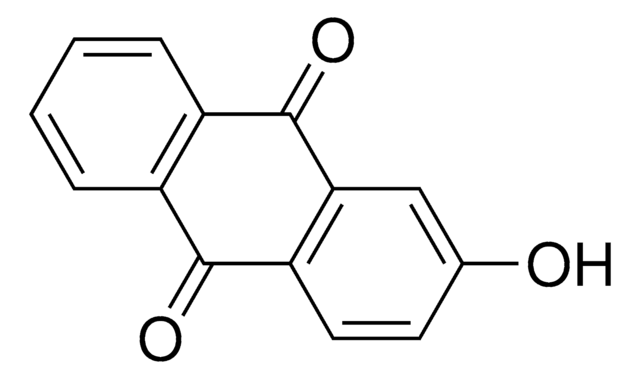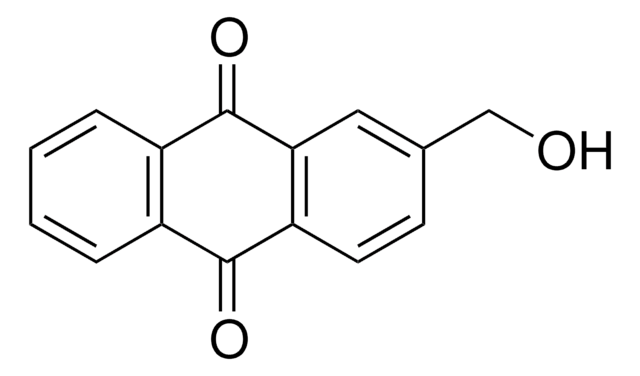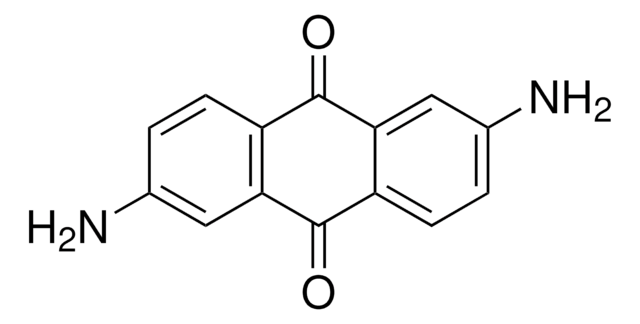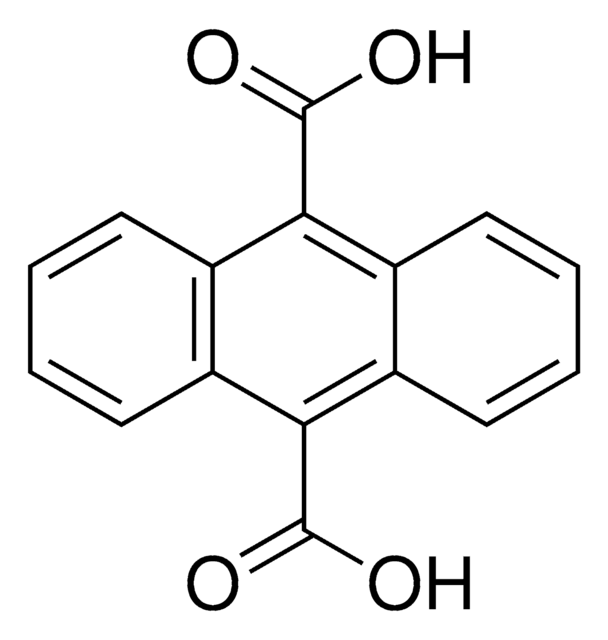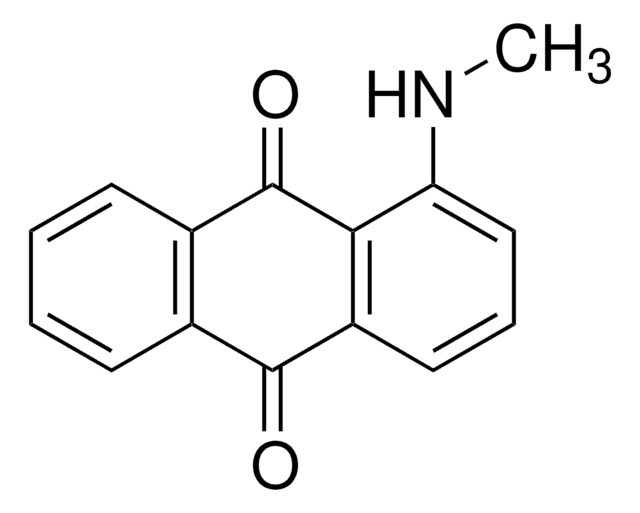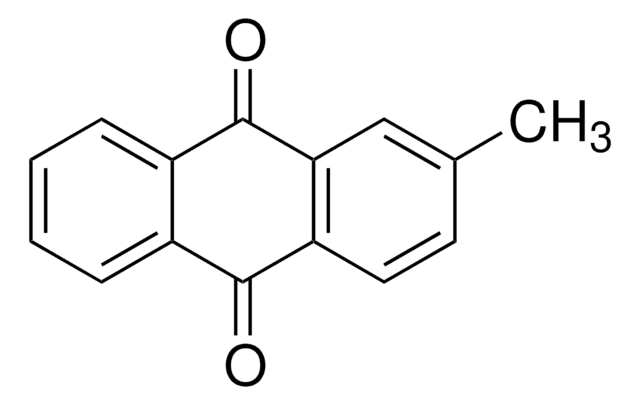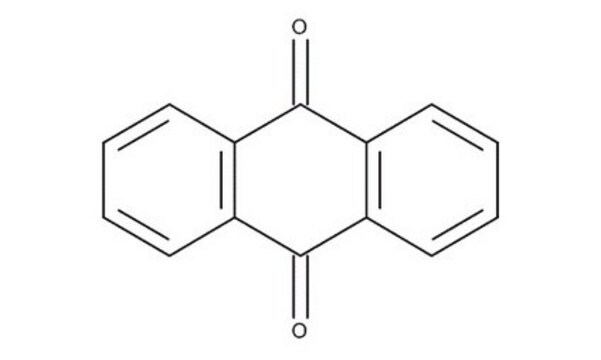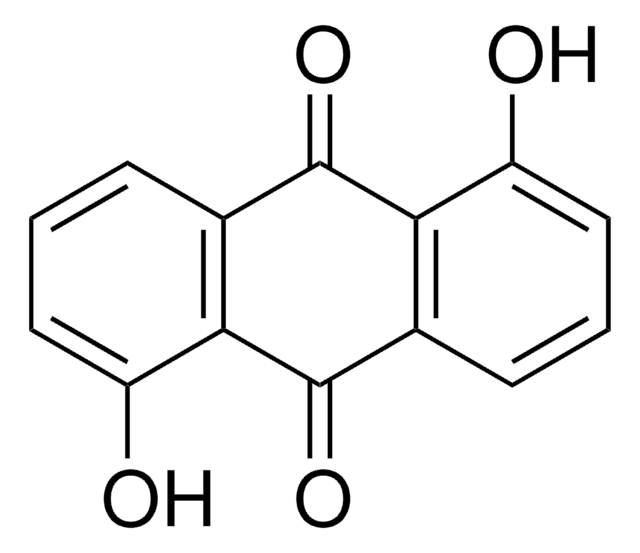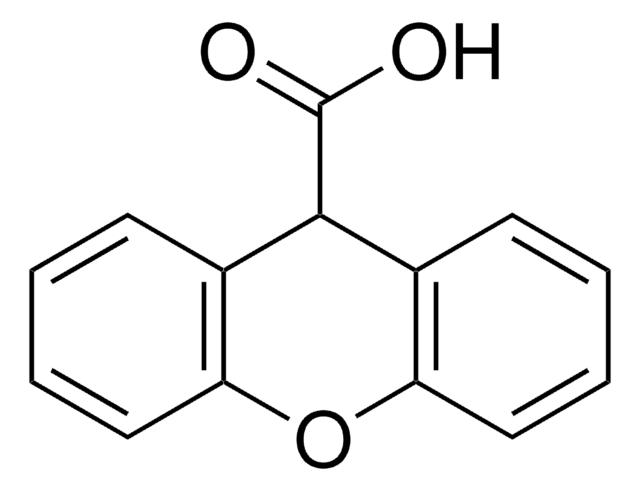252727
Anthraquinone-2-carboxylic acid
98%
Sinónimos:
9,10-Dihydro-9,10-dioxo-2-anthracenecarboxylic acid
Iniciar sesiónpara Ver la Fijación de precios por contrato y de la organización
About This Item
Fórmula empírica (notación de Hill):
C15H8O4
Número de CAS:
Peso molecular:
252.22
EC Number:
MDL number:
UNSPSC Code:
12352100
PubChem Substance ID:
NACRES:
NA.22
Productos recomendados
Quality Level
assay
98%
form
solid
mp
287-289 °C (lit.)
functional group
carboxylic acid
ketone
SMILES string
OC(=O)c1ccc2C(=O)c3ccccc3C(=O)c2c1
InChI
1S/C15H8O4/c16-13-9-3-1-2-4-10(9)14(17)12-7-8(15(18)19)5-6-11(12)13/h1-7H,(H,18,19)
InChI key
ASDLSKCKYGVMAI-UHFFFAOYSA-N
Storage Class
11 - Combustible Solids
wgk_germany
WGK 3
flash_point_f
Not applicable
flash_point_c
Not applicable
ppe
Eyeshields, Gloves, type N95 (US)
Elija entre una de las versiones más recientes:
¿Ya tiene este producto?
Encuentre la documentación para los productos que ha comprado recientemente en la Biblioteca de documentos.
Los clientes también vieron
S Y Tsai et al.
Journal of pharmaceutical sciences, 82(12), 1250-1254 (1993-12-01)
The physicochemical properties of 9,10-anthraquinone-2-carboxylic acid (AQCA) were investigated by thermal analysis, powder X-ray diffraction pattern, solubility, and partition coefficient. The chemical structure of AQCA was confirmed by the data from UV, Fourier transform IR (FTIR), and NMR analyses. Solubility
Coupled Proton and Electron Transfer: Adsorbed Anthraquinone-2-carboxylic Acid Monolayers.
Forster RJ.
Journal of the Electrochemical Society, 144(4), 1165-1173 (1997)
Yiwen Zhu et al.
Materials (Basel, Switzerland), 13(16) (2020-08-17)
Antimicrobial and antiviral materials have attracted significant interest in recent years due to increasing occurrences of nosocomial infections and pathogenic microbial contamination. One method to address this is the combination of photoactive compounds that can produce reactive oxygen species (ROS)
A Bielawska et al.
Folia histochemica et cytobiologica, 39 Suppl 2, 207-208 (2002-02-01)
Although prolidase [E.C.3.4.13.9] is found in normal cells, substantially increased levels are found in some neoplastic tissues. Prolidase evokes the ability to hydrolyse the imido-bond of various low molecular weight compounds coupled to L-proline. The synthesis of three proline analogues
A Bielawska et al.
Roczniki Akademii Medycznej w Bialymstoku (1995), 43, 201-209 (1999-02-11)
The feasibility to targeting prolidase as an antineoplastic prodrug--converting enzyme has been examined. The synthesis of proline analogue of anthraquinone-2-carboxylic acid (potential antineoplastic agent) conjugated through imido-bond (potential target for prolidase action) has been performed. The product was found to
Nuestro equipo de científicos tiene experiencia en todas las áreas de investigación: Ciencias de la vida, Ciencia de los materiales, Síntesis química, Cromatografía, Analítica y muchas otras.
Póngase en contacto con el Servicio técnico

